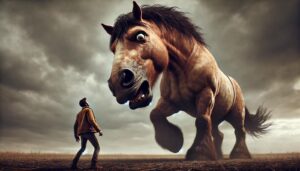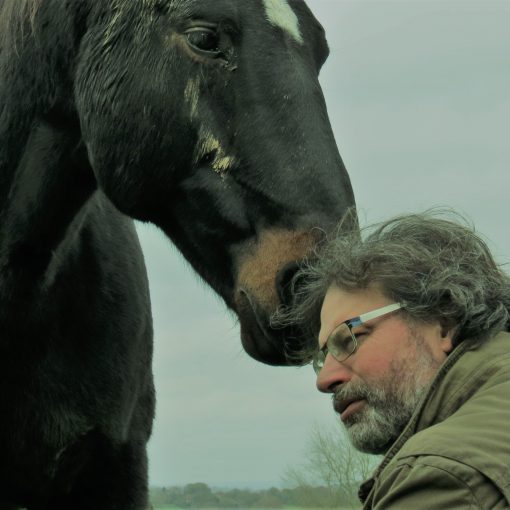Is the horse trying to say something?
How many times does this question come up when training facilitators or delivering equine facilitated interactions? And how many different ways are there to answer it?
Our understanding of horses has thankfully moved on from the view of them as mindless automaton, the Skinner’s boxes of traditional behaviouralist approaches. Similarly, we are beginning to recognise that many “horse experts” are experts in the field of “horses in the context of human expectation.”
There is a slow movement towards the understanding of equine behaviour as natural behaviours exhibited in natural environments. Better known as ethology.
Ethology has it roots in primate studies, and the work of people like Jane Goodall and Frans de Waal. Understanding primates as primates, not as animals observed from the frame of humanity. Ethology considers the unique umwelt of the animal, what is the felt sense of being a chimpanzee or horse for that matter. And how does that frame emotions and or behaviours.
Human neuroscience now also recognises that emotions and emotional behaviours are not hard-wired, they are shaped in the moment, and are very contextual. This understanding is beginning to creep over into animal ethology.
For example....
In horses this is telling us that there is not one meaning to one behaviour.
So, let’s think about the idea of “licking and chewing” – it has filtered down into our knowledge from men with big hats and moustaches who, whilst chewing on their tobacco, want to sell us better relations with our horses through the training of kindly-named conditioned responses. Actually, licking and chewing is about relaxation and stress management, it is an important social communicator between horses, as well as being a natural digestive aid. There is no absolute.
Also, it is worth remembering that stressed animals (including humans) cannot produce saliva.
To apply meaning, we need to consider the context and the environment, and also consider whether it has recently eaten. Add to this we need to understand what it means to, and feels like, for that horse. Questions of umwelt, and questions which are actually not particularly easy to answer.
Yet there are various models of facilitation that call upon observation and interpretation of this behaviour. How many times have I seen horse experts busily tied up in discussions about what the horse has just done, whilst their co-facilitator is busy trying to provide a human interpretation of that from which to shape their debriefing.
times have I seen horse experts busily tied up in discussions about what the horse has just done, whilst their co-facilitator is busy trying to provide a human interpretation of that from which to shape their debriefing.
Ears back is another, tail-movements another.
And so we end up having a lovely chat about equine behaviour. Or sometimes not so lovely! In so doing too often slipping into projecting interpretative meanings onto our clients. Alternatively we provide our client with the opportunity to deflect from what they might need to learn or take away.
Somatic communication
Communication is a somatic (whole-bodied) thing – you do not read my intentions by one specific part of my body. You are probably looking at my face, but your deeper conscious reads all of me. This is in part where you work out if you will trust me in a given situation. Am I somatically congruent with my words.
Our interactions with horses are somatic, as are our clients.
It is not about us interpreting what we see in the horse. It is just that we see something in the horse. That observation is an opportunity to find out more about our client, not to share wisdom on animal behaviour. What happened for our client, what changed for them, or what did it mean to them.
My colleague Jennifer Geach also talks about the common myth of the horse as a mirror (read her blog here). They are not. What they offer is a response to how we are.
If I turn up to my horses in foul mood or angry, he moves away from me. He does mirror me. He does not become angry too. He has the common sense to move away. As a facilitator of these things, all I need to know was that he moved away. The point of exploration is what is going on in my client at that moment.
We also need to recognise both our own influence, as well as the wider environment, elsewhere within, or beyond the space in which we are working.
This is not to say that we should not listen to our horses. They will share much with us about their experience. But we should be considering this from their umwelt, they are telling us how they feel in that situation, and we should firstly respect that. Keeping a safe space for them as well as a client. If they are not comfortable then we should consider whether it is appropriate to maintain their participation.
When we start to discuss “what is the horse trying to say” with fellow facilitators or clients in the context of Equine Facilitated Interactions we make the conversation about the horse and not about the client. If we respect the horse in the process then we create a safe space within which it can be a horse.
In that space we can explore what this means for the human. It is the human who is the client and not the horse.




